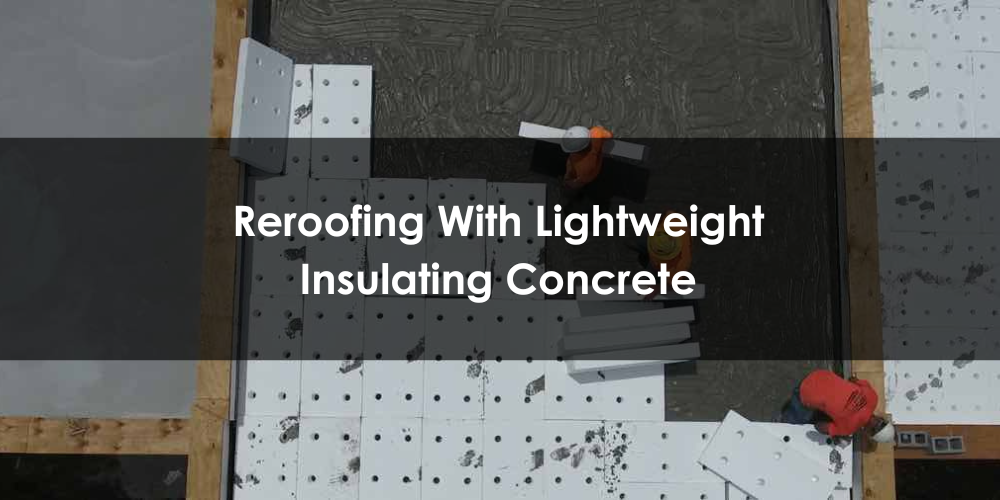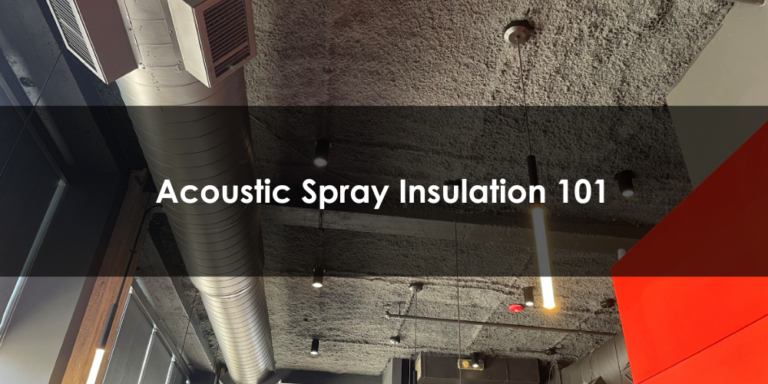
The lifespan of a commercial roof is typically 20-30 years. In regions that face severe weather or significant wear and tear, building owners may need to replace their roofs more frequently. To maximize the financial potential of their investment, owners should think strategically about the long-term costs of their roofing system, including the reroofing process.
If it’s time to reroof your structure, lightweight insulating concrete (LWIC) roof deck systems are one of the fastest, easiest, and most cost-effective choices compared to traditional tapered insulation systems. In this blog post, our roof system experts explain how building owners can save time and money throughout the lifespan of their building by reroofing their tapered insulation systems with LWIC.
No tearing off the existing roof
The reroofing process with traditional insulation board systems can be costly, time-intensive, and damaging to the environment. Total tear-off is typically required, since the boards have lost their strength and insulation R-value by the time of reroofing.
There are a variety of disadvantages to total roof tear-off. First, it risks damage to the building’s interior and may disrupt business operations. It also creates a great deal of debris, which must be disposed of in a landfill and can create a substantial environmental footprint.
LWIC roof deck systems can be installed over the old roof
In most cases, LWIC can be cast directly over an existing membrane and insulation system. Then, in another few decades when it’s time to reroof again, only the membrane needs to be replaced. The insulation in LWIC systems is embedded in a layer of concrete, meaning roofers do not have to tear it out along with the finish membrane during re-roofing. This saves significant time, money, and labor, and reduces debris and the cost associated with insulation removal.
Cost savings of LWIC roof deck systems
LWIC roof decks are cost-effective in a number of ways. They are monolithic systems, unlike tapered insulation systems which require multiple layers of board to create a slope; LWIC systems typically save $2-4 per square foot. LWIC decks also have built-in fireproofing capabilities, saving owners the cost of installing additional roofing fireproofing.
LWIC roof decks can save even more money over time since they are less likely to be destroyed in high-wind environments. The monolithic concrete structure acts as an air retardant and provides excellent wind uplift performance.
Another significant advantage of LWIC roof deck systems is their excellent R-values, which contribute to optimal thermal efficiency and reduced building energy costs.
Time savings of LWIC roof deck systems
When it comes to roofing projects, general contractors and construction managers need the installation to stay on schedule without costly delays. The installation process for LWIC roof decks is significantly faster than traditional tapered iso systems, which streamlines construction schedules and reduces labor cost. LWIC requires minimal setting time, and the roofing membrane can be applied as soon as 48 hours after the initial pour.
The lifecycle time savings of LWIC roof decks are even greater, since the insulation is permanent and will not need to be removed or replaced during reroofing.
LWIC roof decks are versatile
LWIC can be poured over a variety of substrates, including concrete, wood, or steel decking. Additionally, the system offers versatility in terms of the roofing membranes that can be installed on top of it. Built-up roofing, modified bitumen, and single ply membranes of a variety of compositions can be installed over LWIC.
The versatility of lightweight insulating concrete ensures compatibility with diverse building types and construction requirements, and improves the overall durability and sustainability of the roof system.
Want to learn more?
If you have questions about LWIC roof deck systems or reroofing, our experts are happy to help. Contact us today!




